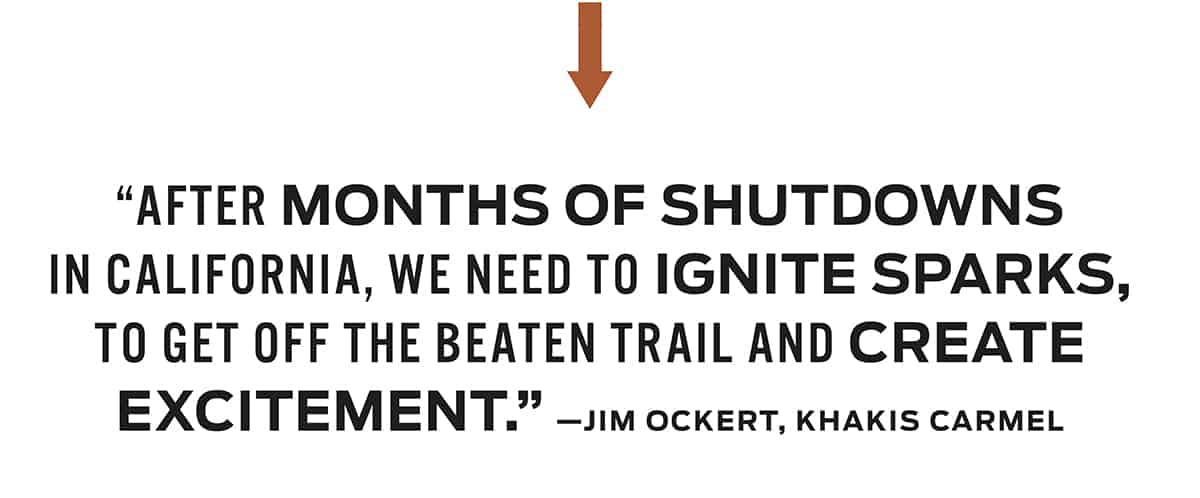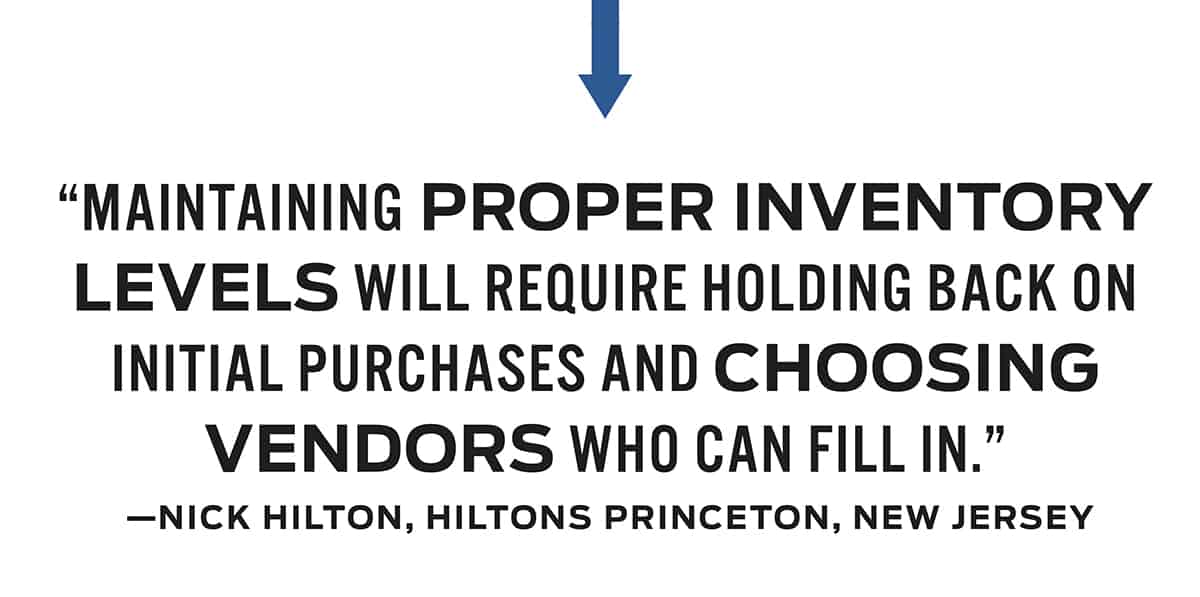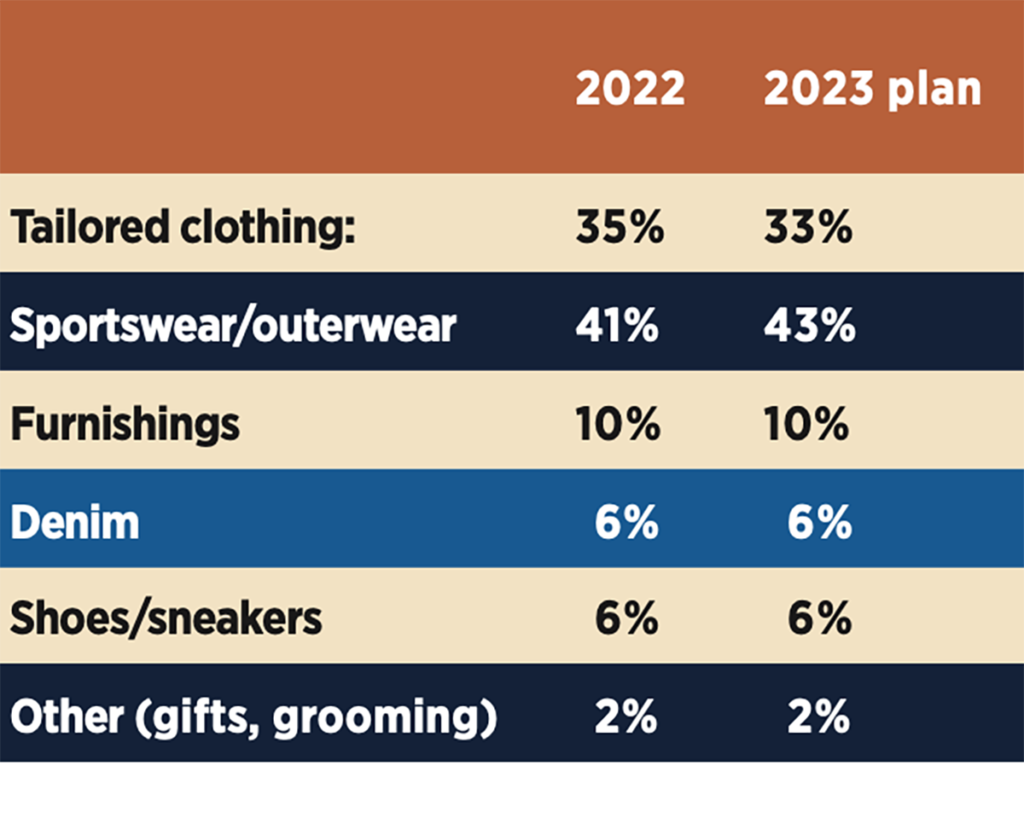FROM OUR FEBRUARY ISSUE: SHINING STARS

The entire MR team is proud to present our February 2023 print edition. Haven’t gotten your copy, yet? Feel free to page through a digital copy at Issuu, and we’ll continue to post the individual stories on MR-mag.com. If you haven’t been getting MR in print, be sure that you are on our mailing list for future issues by completing this form.
ACCORDING TO MR research, independent menswear stores had a banner year in 2022 and are preparing for another in 2023. Although planned increases are decidedly more modest than last year’s, most merchants would be delighted just to maintain their record high sales volume (and record high cash-on-hand), considering the significant challenges they are dealing with.
By almost all accounts, 2022 was an exceptional year through mid-October, at which point sales slowed considerably. According to Mastercard SpendingPulse, shoppers cut back sharply on retail spending in November, with overall sales dropping 0.6 percent, but then rallied in December, perhaps responding to price promotions, for a 7.6 percent holiday sales increase. But according to year-end estimates from our mostly upscale retail respondents, 2022 increases in menswear far exceeded the norm, averaging 30 percent and ranging from 4 to 100 percent. Plans for the first half of 2023 were somewhat mixed, with 9 percent of independent retailers planning down (average 5 percent), 14 percent planning flat, and 77 percent planning up an average 8 percent (2–20 percent range).
Editor’s note: This is part 1 of a 2-part feature, to run in full here on the website (Part 2 is here). Our sample of independent retailers comprises large and small menswear stores across the U.S., some legendary, some new to us but highly recommended. Some are city stores, some suburban, some resort. Some date back a century, some just a few years. Some store owners are young risk-takers, while most are older and (hopefully) wiser. But whatever their orientation, these retailers were surprisingly open to expressing their hopes and fears, their strategies and solutions, and their genuine passion for the business. What’s more, they were remarkably willing to share success secrets and offer heartfelt advice. It’s a spirit of generosity and camaraderie that should make us all proud to be part of the men’s fashion community.

The Power Of Mission Statements
The dictionary defines mission statement as “a formal summary of the aims and values of a company, organization, or individual.” MR believes that creating a strong mission statement helps keep businesses on track and focused on key goals. Here, a few examples we found inspiring.
From Andy Mallor at Andrew Davis in Bloomington, Ind.: “Our business is cus- tomer-focused and relationship-based. Our mission is to help customers do three things: develop style confidence, obtain quality and value, and have fun in our store.”
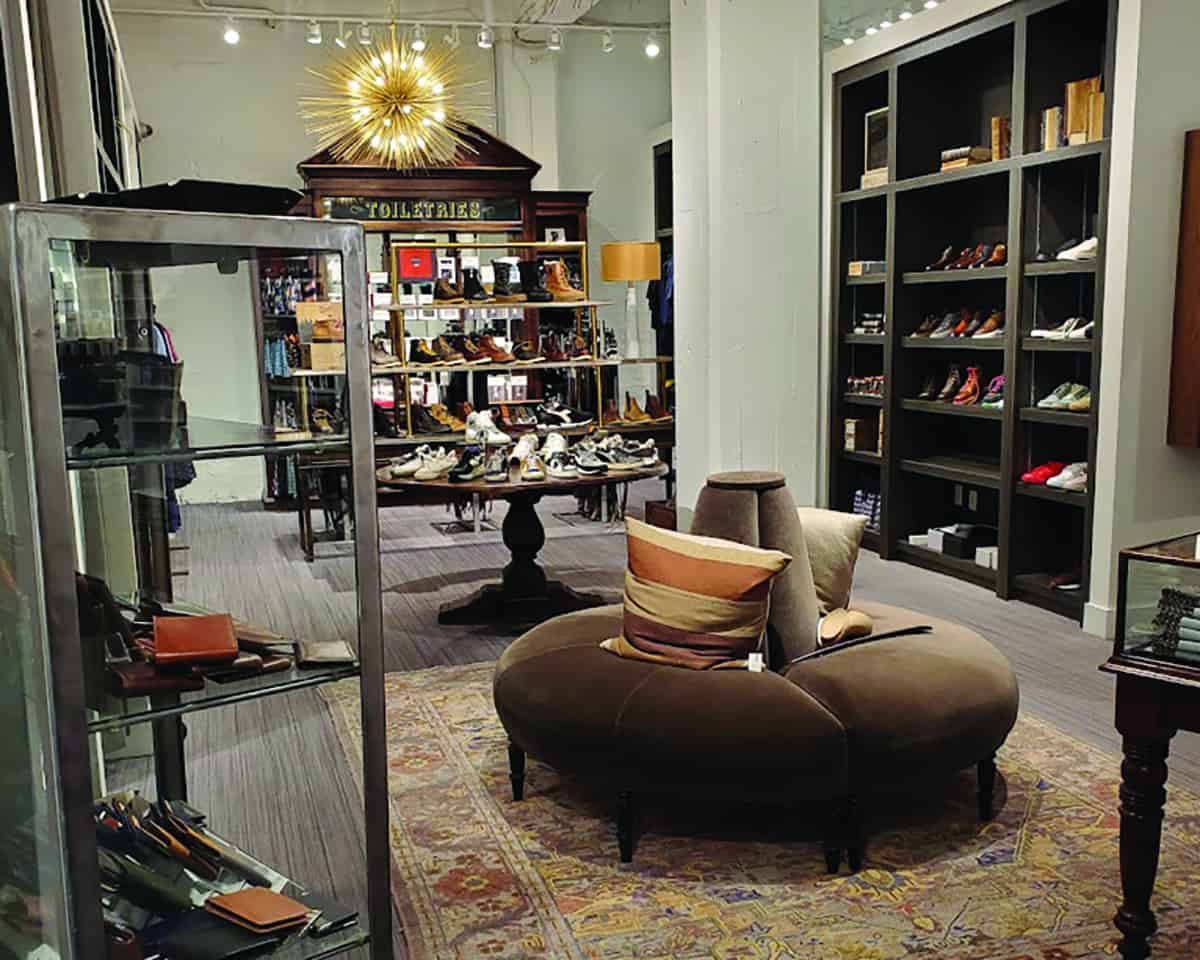
Greg Walsh and Dana Swindler at MP3 in Minneapolis, Minn., say,“We’re dedicated to building a one-of-a-kind retail gallery where the curious are rewarded, where style is limitless, where everyone is welcome to find pieces of themselves amongst our assortment, and where life is celebrated as the greatest form of art.”
And from Rick and Jim Penn at Puritan Cape Cod in Hyannis, Mass.: “Earn the relationship. We need to earn the relationship every day with our customers, our employees, and our community.”
From David Perlis at Perlis in New Orleans, Baton Rouge, and Mandeville, La.: “To provide compelling merchandise with an excellent value proposition at a variety of pricepoints presented in a comfortable shopping environment by a knowledgeable and friendly staff. Our focus is on building long-term relationships for the betterment of our customers, our employees and our family.”
Ben Belton at Benjamin’s in Morganton, N.C.: “Our mission is to create a collection with an artistic twist. Our customers have come to expect the unexpected, be it a royal blue python jacket or a red stretch leather belt.”
Harley Hooper at Harley’s in Tyler, Texas writes, “Our goal is to provide the best service and the most unique assortments of men’s tailored clothing and sportswear.”
Says Dennis Jaworski at Palmettoes in Hilton Head, S.C.: I work to “make a friend and create a relationship. Making the sale is a bonus.”
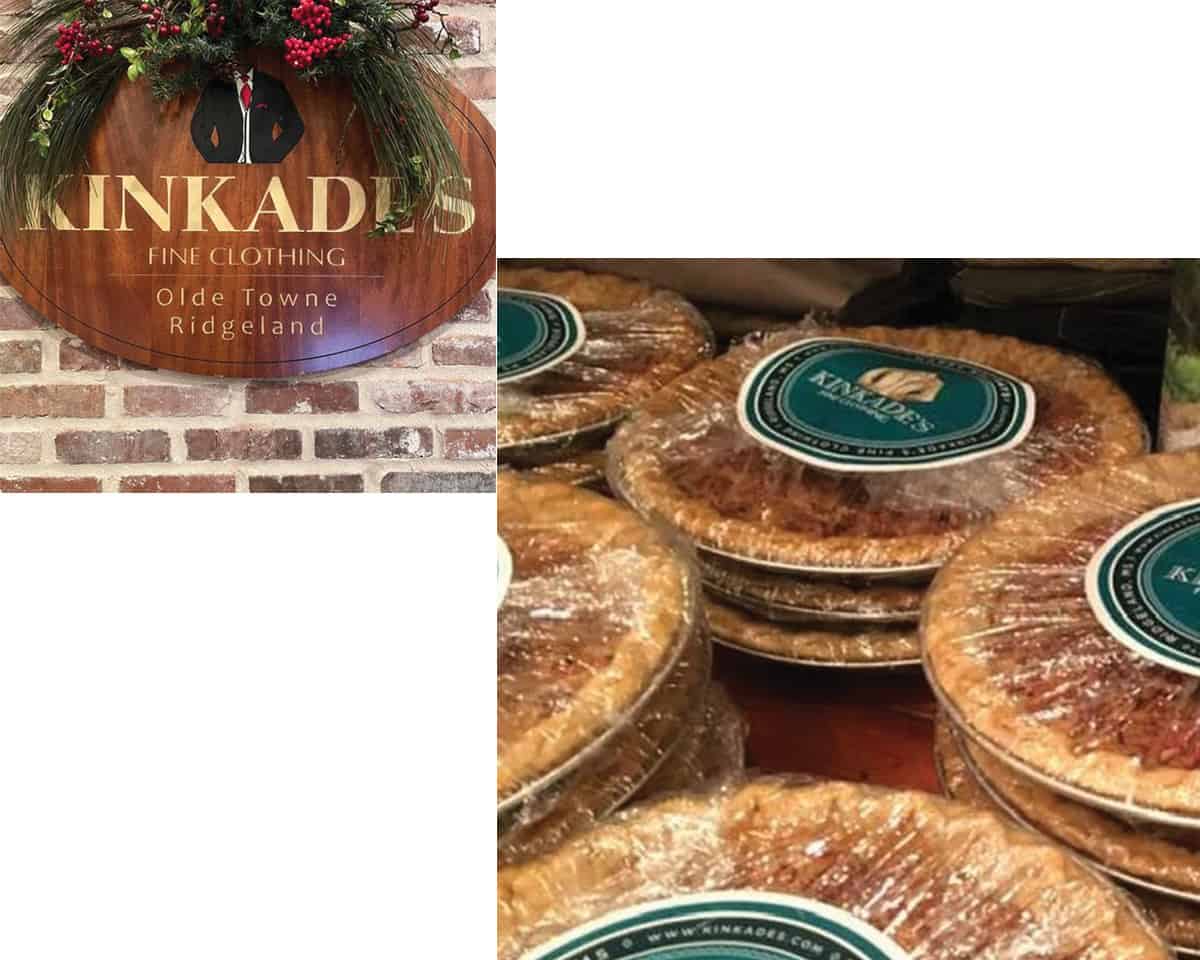
And says Keith Kinkade at Kinkade’s in Ridgeland, Miss., “Our store is based on three guiding principles: quality, integrity, and excellence. I learned these over 30 years ago from my Dad. He also taught me to work hard every day and take the extra step to make others feel valued and seen.”
And finally, from Murry Penner of M.Penner, Houston, Tex., simply: “To help men live their best lives in style.”
Winning Strategies
When asked what specifically has accounted for their store’s longevity and/or recent success, most respondents alluded to a strong staff, exceptional customer service, community involvement, a merchandise mix geared to regional tastes and a certain amount of risk-taking. Many mentioned strong vendor partnerships and unique and/or exclusive product. For several, it’s very much about the persona of the store owner. In the merchants’ own words, here are a few of the more thoughtful responses. From Trey Kraus at Carltons in Rehoboth Beach, Del.: “1. Don’t get stuck on initial or maintained margin: you deposit gross profit dollars. 2. You can’t sell from an empty truck: inventory is our weapon to defeat online stores. In a world of instant gratification, you need selection and depth of sizes. 3. Evolve: focus on current trends and personalized service.” At David Wood in Portland, Maine, David Hodgkins and Sarah Hutchinson Brown strive to make shopping fun and efficient. Their DW Fit Kit strategy is their main weapon: “You don’t need a lot of clothes, just the right clothes.”
Steve Bratteli at Mr. Ooley’s in Oklahoma City, Okla., believes it’s about “plenty of saying yes to our customers, and a large selection of buy-now fashion.”
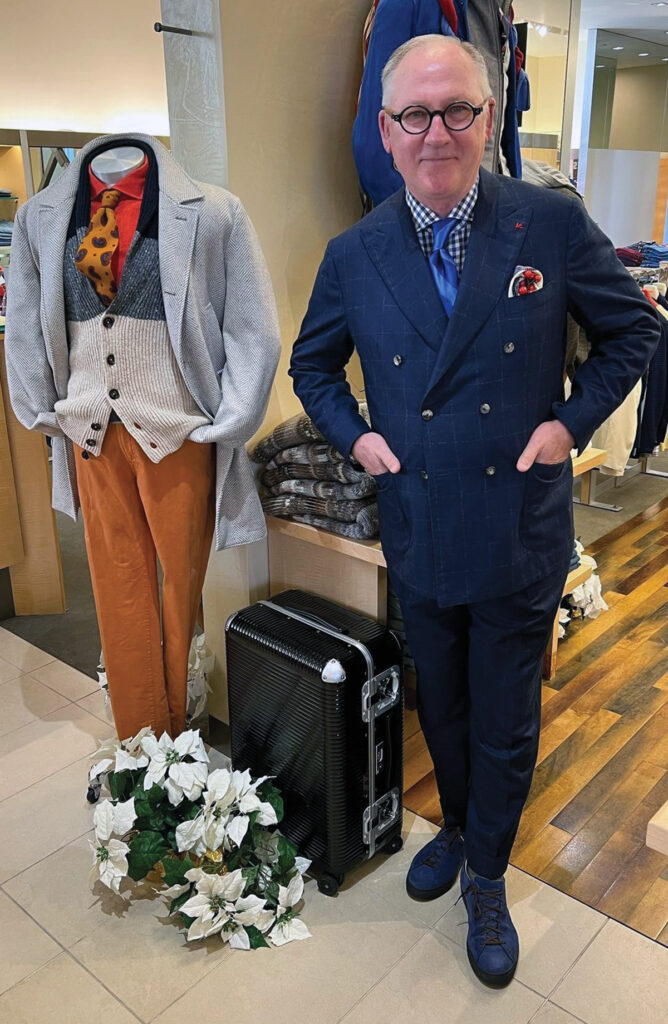
Jim and Connie Ockert at Khaki’s of Carmel in California are leaning heavily on unique brands. Jim also narrates frequent videos of newly arrived fashion, developing their own product and presenting it with impact via fabulous windows and 65 mannequins strategically placed throughout the store. Says Jim, “With encouragement from Connie, I’m aggressively seeking out fashion that’s distinctive and different. After all those months of pandemic shutdowns in California, we need to ignite sparks, to get off the beaten trail and create excitement.”
Penner maintains his exceptional year was based on genuine respect for his employees, customers and vendors. “Without any one of these three, it all fails, or at the very least it’s no fun. Our employees have our full support and trust to do whatever it takes to achieve our mission.” Wally Naymon from Kilgore Trout in Cleveland, Ohio credits “a wonderful team of professionals who care deeply about the clients.” From Marshall Simon at Gwynn’s in Mount Pleasant, S.C.: “We have great associates who go above and beyond to deliver outstanding service.” Ken Metzger at Metzger’s in Mobile, Ala., says it’s about “trust without game playing.” Offers Scott Moorman from Moorman Clothiers in Iowa: “We take care of people. We love what we do, and it shows.” And from David Rubenstein of Rubensteins in New Orleans, La.: “It’s all about change, so take the risk. Be prepared to push or pull your customers forward.”
The Choolani family at Peter Renney’s in Portland, Maine, lost their dad and store founder in 2016.“Our work ethic comes from him,” affirm Jyoti, Neenu and Megha. “He founded the business in 1975, basing it on customer service and honesty. We watched him work in the store with our mom for 30 years, dealing with both highs and lows. His resilience and desire to grow the business with integrity are in the forefront of our minds every day.”
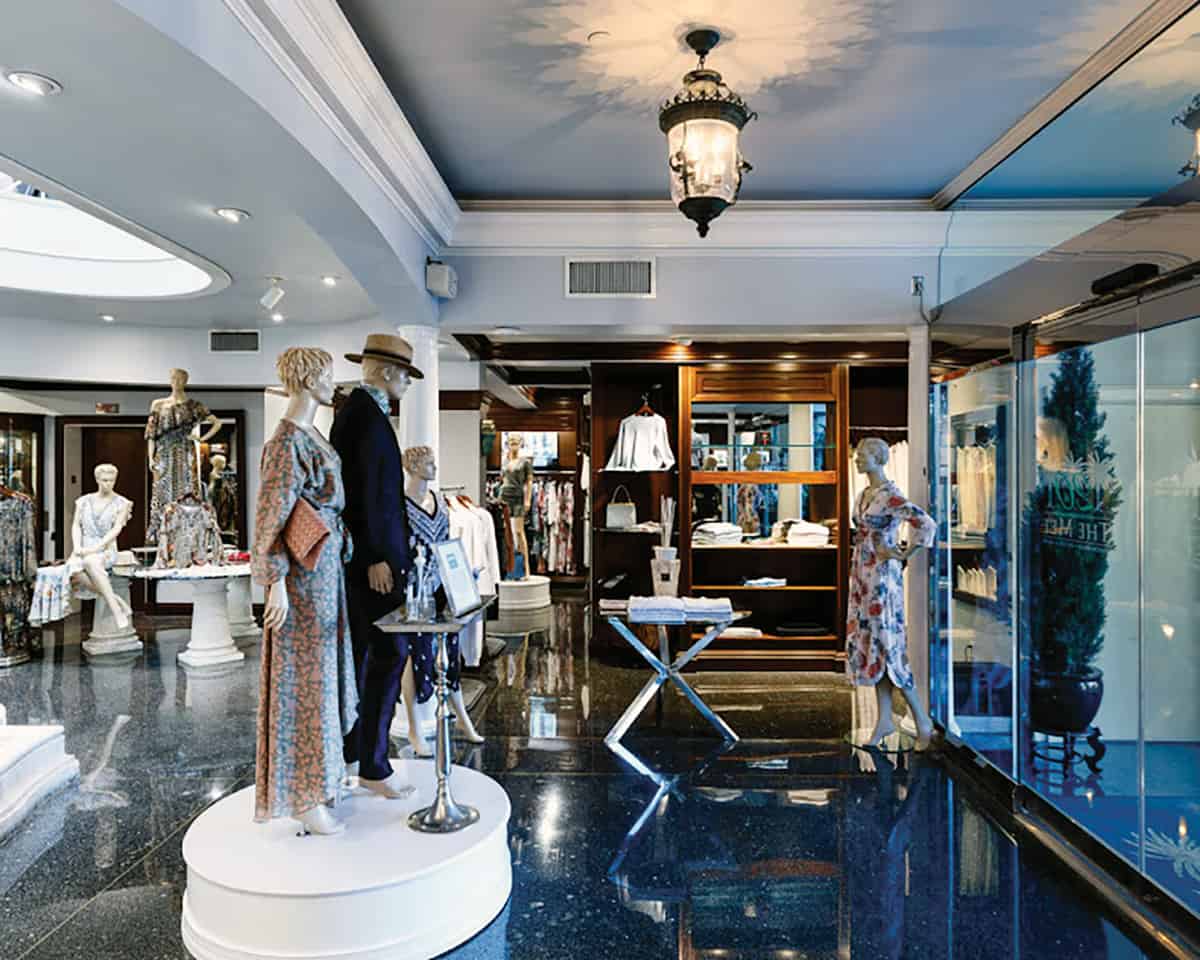
Geoffrey Michel from The Met in Sarasota, Fla., attributes his success to being present. “The best fertilizer for a business is the owner’s footprint. Working directly with clients and staff tells you so much more than a report. Brenda personally signs every check, which is very important to our expense management.”
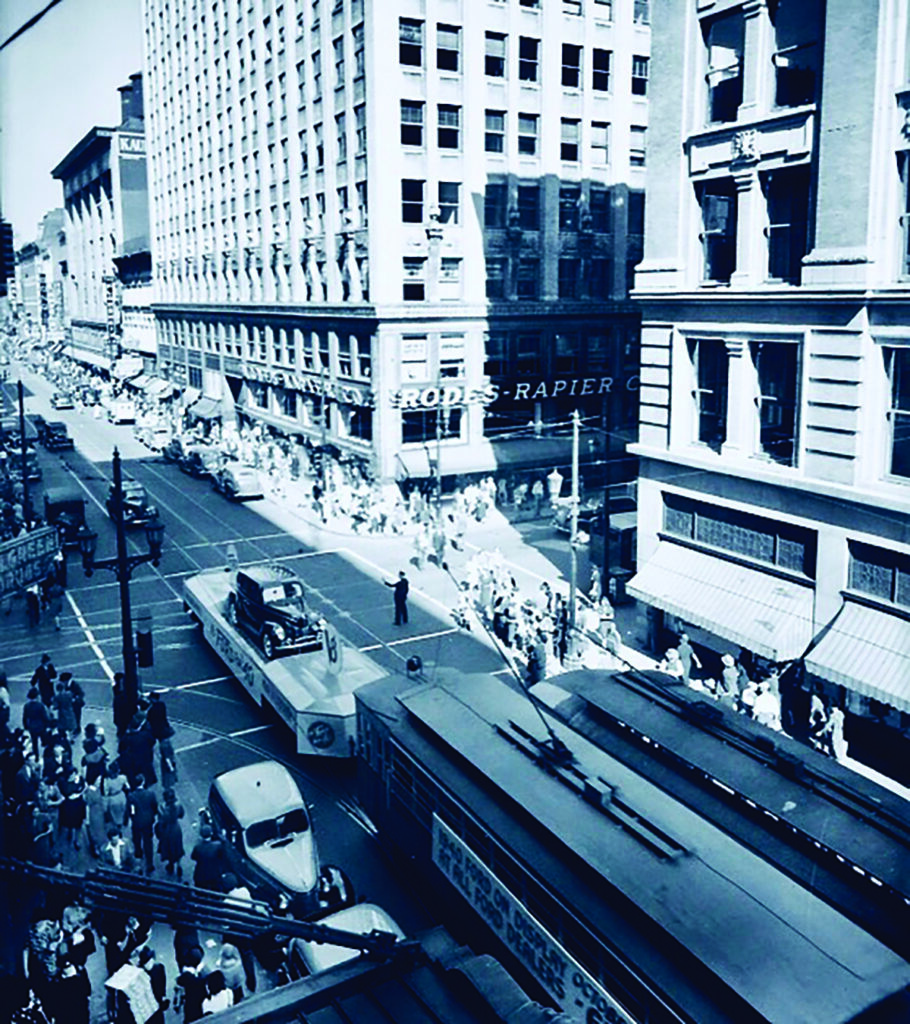
Howard Vogt at Rodes in Louisville, Ky., says it succinctly: “Our success is due to our people: they deliver smiles and confidence. They make our customers look and feel great!” From Jaworski: “We’ve managed to create a club-like ambiance in the store, with a grand piano, a working bar, and numerous seating areas. We’ve built a reputation as ‘the club without dues.’”
And from Walsh and Swindler at MP3 in Minneapolis, Minnesota: “We started small with no retail background, which helped us to make mistakes more quickly, and then forge ahead to correct. We listen to what our customers tell us they want. The lifestyle component was inherent from the start: we’ve had an interior design business since 1994, adding furniture in ’01, men’s in ’07, women’s in 2020. It all came together before lifestyle became a trend.”
Bolstered By Brands
Retailers are divided: Narrow and deep or broad and shallow? Recognized brands or private label? Obviously, establishing strong partnerships with key vendors is essential in this era of supply chain backups. However, vendor demands for high minimums and other prerequisites are becoming intolerable for many merchants, especially since these same brands are increasing their D2C business, thereby competing directly with the stores that have nurtured and supported them over the years.
For most surveyed stores, their top three menswear brands contribute an average of 33 percent to their total menswear volume, ranging from 20 to 70 percent according to store. In almost 30 percent, their top three vendors combine to contribute half or more of their total menswear volume. That’s a lot of dollars to risk losing, so many retailers are begrudgingly accepting high minimums from their major suppliers. Others are developing their own brands.
Says Belton, “I don’t lean on any single brand: I shop by emotion; I try to be a merchant, not just a retailer. I believe in taking chances, and that too early is better than too late.”
The top brands cited by our decidedly upscale specialty store sample: Jack Victor, Canali, Zegna, Peter Millar and Isaia. Also listed: Coppley, Stenstroms, Cucinelli, LBM, Eleventy, Munro, Byron, Faherty, HSM, Hickey Freeman, Samuelsohn, Magnanni, Eton, Etro, 34 Heritage, Johnnie-O, Emanuel Berg, Hagen, Hiltl, David Donahue, Sand, Gimo’s, Brax, Ballin, Meyer, Peerless, Paul&Shark, Robert Graham, Alden, Alberto, True Grit, Tommy Bahama, Raffi, Greyson, Dion, Relwen, Tailor Stitch, On Running, Lululemon and a slew of smaller Italian brands, including Baldessari, Fideli, Fradi, Etro, Pescarolo, Sartorio, Enrico Mandelli and Barmas.
Challenges and Change
Among the current challenges cited by Penner, rapidly rising product prices and rising costs of doing business.“To be sure, margins are good right now but this won’t last forever; there are certainly limits to what people will pay for clothes.”
Kraus concisely sums up the challenges independent retailers now face:“Competing with local stores, competing with our own vendors, the weather, inflation and staffing. These days, few people want to work for any price!”
Notes Belton: “We’re seeing fewer customers coming in, but fortunately, they’re buying multiple items at higher tickets. We’re also seeing more new faces.”
Mallor lists his challenges as follows: “Late shipments, increased costs and staffing issues. We must stay passionate about the human experience that the staff creates for customers. If that keeps growing, so will the numbers. But with much frustration among customers not getting their custom orders in 6 to 8 weeks, how we handle the frustration is key.”
Simon feels most challenged by competition from his vendors.“Consequently, we’re making Gwynn’s the brand, curating the best of the best from 150+ vendors.” Says Naymon, “Our business is all about sellers and sewers. We’re working hard at finding and developing the best talent.” And from Walsh and Swindler at MP3: “Hiring is becoming more of a challenge than usual, both entry-level and senior positions. Since the retail industry has consolidated over the last several years, it’s tough to find people truly vested and interested in retail.” Perlis agrees: “My biggest concern over the next decade is personnel. It’s harder than ever to find young people interested in retail. I’m spending more time than ever networking. More than 20 percent of our workforce is in the twilight of their careers.”
“The challenge is finding vendors with stock available,” offers Bratteli.“And vendors who can produce custom orders in a timely manner and ship seasonal orders early.”
The team at Peter Renney’s also bemoans supply chain setbacks. “Getting certain products and fabrics in a timely manner has been a problem. But our vendors are doing a great job communicating potential issues so we can prepare accordingly.”
“Inventory is the issue,” agrees Rubenstein. “Getting refilled on stock merchandise is a struggle. Fortunately, our customers are buying what we have, but we’ve missed a lot of sales due to missing solid suits, navy blazers, white dress shirts. Hiring personnel is also difficult, especially tailors and career-oriented sales associates.”
Nick Hilton of Hiltons Princeton, in New Jersey, confides, “Our two biggest challenges are decreasing demand for tailored clothing and the fact that maintaining proper inventory levels will require holding back on initial purchases and choosing vendors who can fill in.”
Michel worries most about escalating costs. “It’s a blessing and a curse to own Class A real estate in a luxury community. We’re currently replacing an elevator and a roof. Property taxes continue to climb. It’s a big responsibility.” Ockert asks himself three questions before every purchase: “Is the merchandise unique/special/exceptional in some way? Is it priced right? Can they deliver? If they ship late, I won’t buy from them again.”
In Norwell, Massachusetts, Carlo Agostino at Natale’s confronts the challenges of working virtually on his own (with two tailors: he’s looking for a third).“The biggest challenge is keeping the tailor shop on pace with demand. The past 18 months have been busier than anticipated. If I had a third tailor, I could do more business, but I feel blessed that we are needed. We’re selling lots of suits, sportcoats and shirts and we tailor it all, which is time-consuming. The other big challenge: most vendors sell direct to the consumer at a lower price. This takes away the value that retailers have tried to establish for these brands. It’s deflating.”
Current Goals
While New Year’s resolutions are often broken before the champagne bubbles start to fizzle, we believe these 2023 goals and strategies are likely to stick.
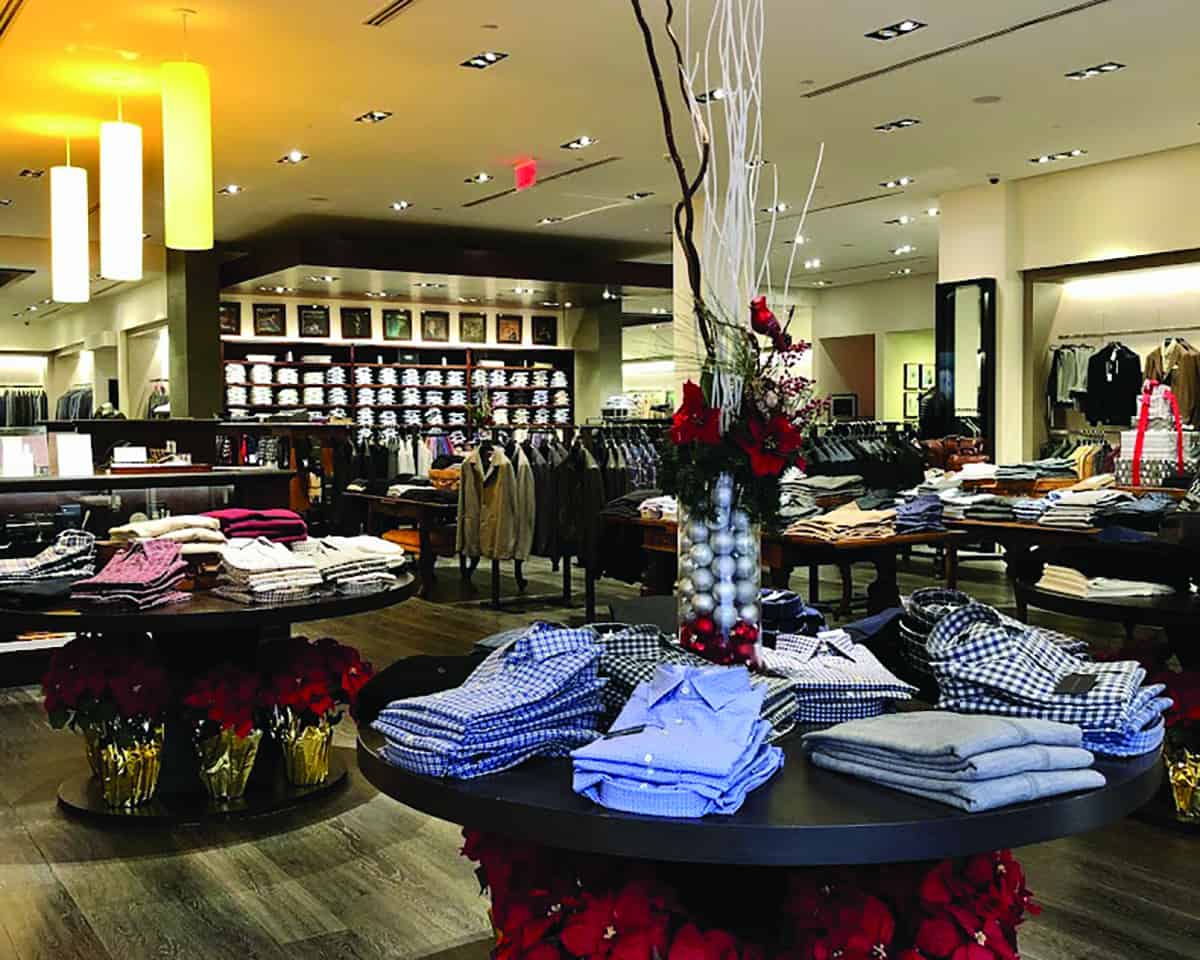
John Braeger at Garys in Newport Beach, Calif., plans to “maintain sales with a slight increase, control inventory and turn product for excellent cash flow, and recruit a new sales associate with a passion for the business.” Harry Mayer in Meridian, Miss., is working on “better tools for training our sales team, upgrading our product mix, ambiance and fixturing.”
Dale Parker at J. Parker in Savannah, Ga., is about to “open a fourth store, the first outside of Savannah.” Naymon hopes to “add a seller who personifies our values: passion for fashion, elite customer service, and hospitality. We will continue to reward our associates for their commitment to our growth and stay ever mindful of the numbers to focus on inventory management.” Ockert resolves to plan realistic growth, to regularly reevaluate suppliers and categories and to get back to shopping Europe. Most importantly, he vows to “control deliveries by not buying from unreliable resources. Late is late; product is expensive.”
Bratteli is increasing correspondence with customers, improving staff training on new products, and reviewing every part of the customer experience to find ways to improve.” Dana Katz from Miltons in Massachusetts is “gaining the confidence to serve his clients in all their tailored clothing needs.”
Many retailers are hoping to build a stronger social media experience. Says Michel, “The population surge in Florida leaves us with many new customer introductions. We’re considering expanding to a few local locations. We’re also transitioning our software to give our team more efficient yet genuine contact opportunities. We know clients can shop 24/7 from their phones and we want to earn their purchasing.”
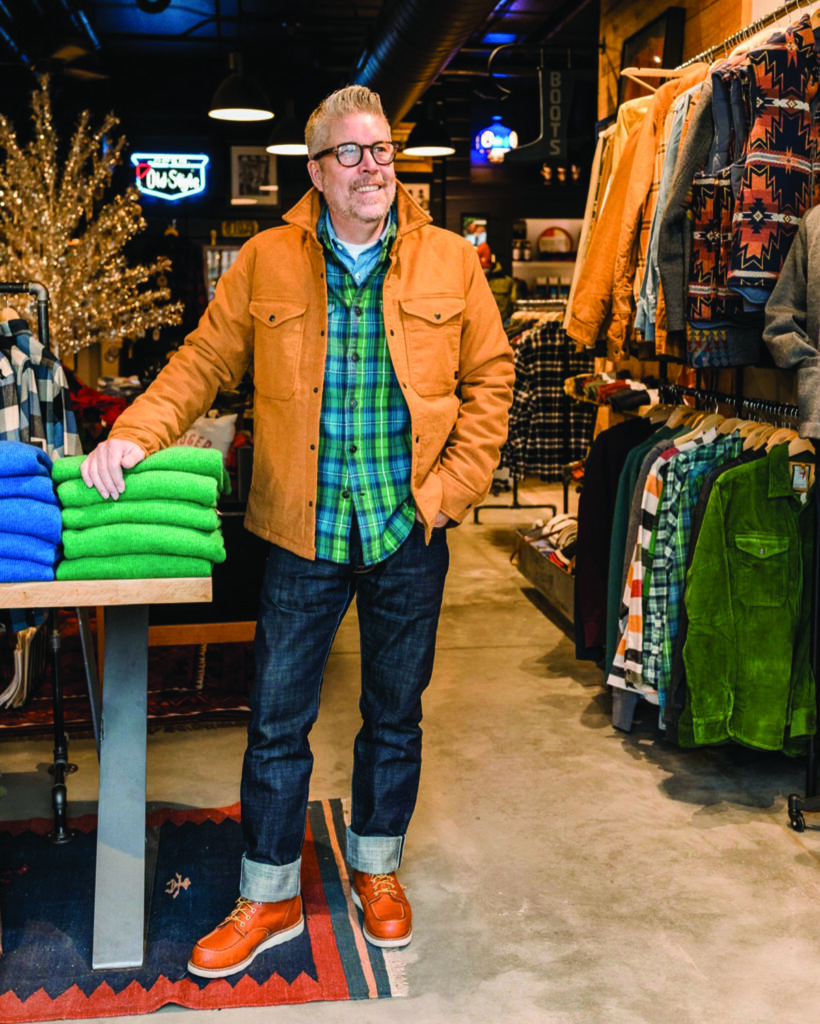
At Journeyman in Middleton, Wisc., Todd Christiansen is growing online business by expanding digital marketing and local advertising. Hilton notes four key goals: “Solidify a succession plan; expand tailored and custom prices, both up and down; find a social media platform that works; and train the staff to be custom clothing experts.”
M.J. Daswani in West Hartford, Conn., cites three key goals for 2023: “An enhanced state-of-the-art custom department and tailor shop; strengthening direct sales potential for home/office visits; strengthening relationships with online bloggers, stylists, and ambassador programs to create demand in new markets (universities, new living and work communities, networking groups); and exploring CRM options, e.g. letting customers know what’s coming next and creating excitement around those new looks.” From Agostino, it’s “finding sales staff, creating a better marketing plan for online, and increasing outerwear sales January through March when it’s really cold around here but hard to get stock.”
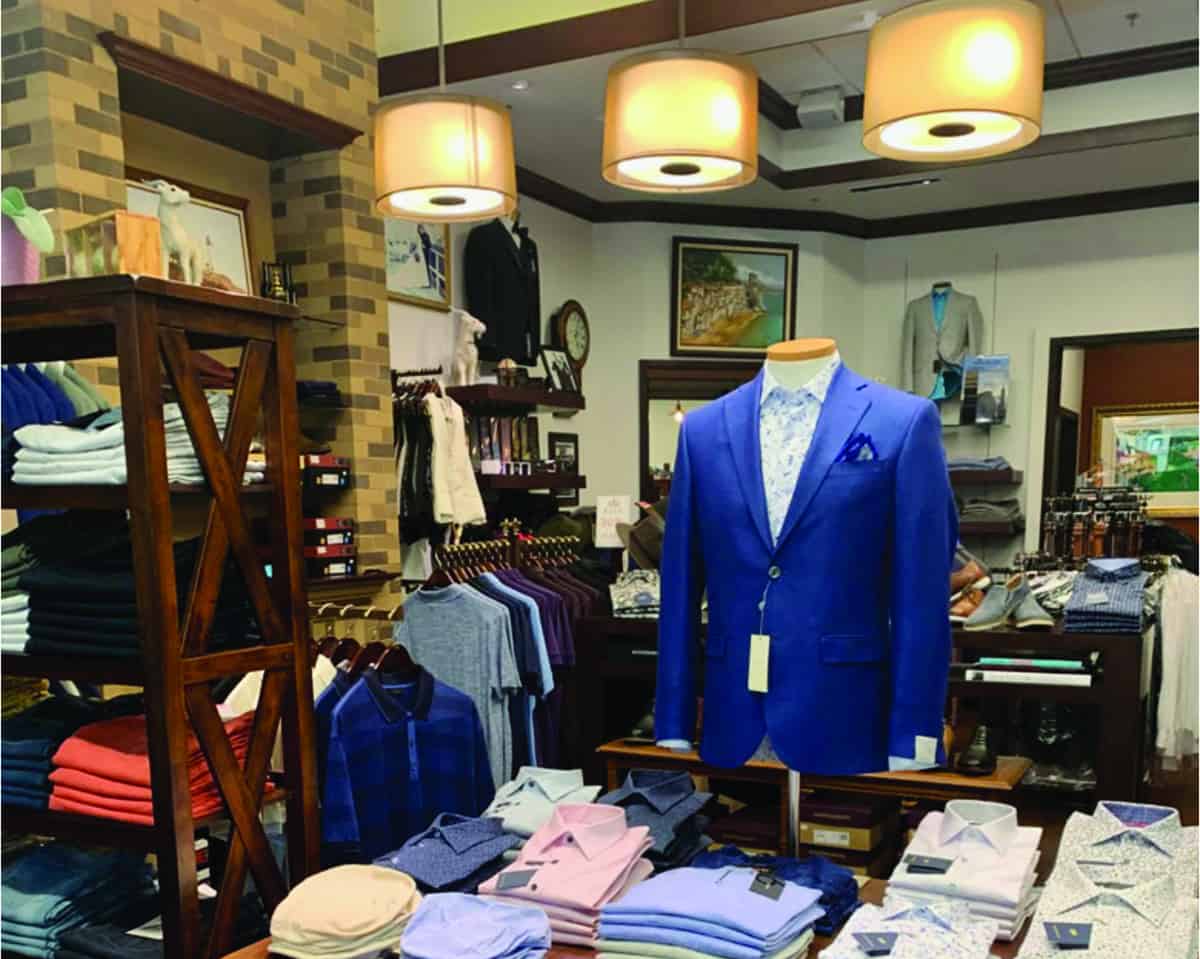
A universal goal is well expressed by Tom Malvino from Louis Thomas near San Francisco: “My goal is to stay flexible in order to react quickly when things change or when opportunity knocks.” He also hopes to “create more awareness via strategic advertising on social media and to focus on the reasons he chose this business in the first place: a passion for fashion, a keen eye for hot items, a true love of people and of forming relationships.”
Breakdown By Category
Does it still make sense to analyze business by category when today’s “New Wardrobe” parameters defy classification? Is a lined overshirt or quilted vest crafted by a clothing maker considered sportswear, outerwear or tailored clothing? Most interesting about the survey results is not the averages but the range of responses. For example, tailored clothing ranged from 11 to 60 percent of menswear volume, according to store; furnishings from 3 to 21 percent.
As might be expected, after such a strong year in 2022, few retailers are making major changes in their focus, with tailored clothing projections down just slightly. Even so, retailers are hoping that on-time deliveries and EDI replenishment will maintain or even increase last year’s tailored clothing volume.
To Come In Part Two:
Online Opportunities, Creating Buzz, The Youth Market, Scare Tactics, Cash Is King, and much more!



